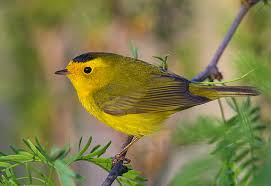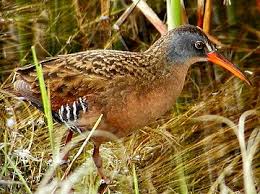Monday, September 14, 2009
Fall migrants- Sat., Sept.12th
Location: Five Rivers
Observation date: 9/12/09
Time of day: 9:00am- 2:00pm
Number of species: 41
Wood Duck 1
American Black Duck 2
Mallard 2
Great Blue Heron 1
Bald Eagle 1
Cooper's Hawk 2
Red-tailed Hawk 1
Mourning Dove 3
Ruby-throated Hummingbird 2
Belted Kingfisher 1
Downy Woodpecker 1
Hairy Woodpecker 1
Northern Flicker 3
Pileated Woodpecker 1
Eastern Phoebe 3
Great Crested Flycatcher 1
Philadelphia Vireo 1
Blue Jay 6
American Crow 16
Black-capped Chickadee 12
Tufted Titmouse 2
White-breasted Nuthatch 1
Carolina Wren 1
Ruby-crowned Kinglet 1
American Robin 1
Gray Catbird 8
Northern Mockingbird 4
Brown Thrasher 1
European Starling 40
Cedar Waxwing 20
Magnolia Warbler 2
Yellow-rumped Warbler 1
Black-throated Green Warbler 3
Black-and-white Warbler 2
American Redstart 1
Common Yellowthroat 2
Field Sparrow 2
Northern Cardinal 4
Red-winged Blackbird 5
House Finch 2
American Goldfinch 6
This report was generated automatically by eBird v2(http://ebird.org/ny)
Wednesday, September 2, 2009
Week in the Adirondacks- Part Five

Friday, July 24, 2009
Week in the Adirondacks- Part Four
We arrived at 9:00AM, strapped on the gear, and set out in partial sunshine. There is a power line cut (picture) a short ways in, and we scanned in both directions for birds using the poles/wires as a perch, without luck. We did see two Mourning Doves, which I would not mention other than the fact that these were the only two seen or heard the entire week. On the same subject, we did not see a single cardinal the entire time, either.
The birding picked up pace rapidly thereafter. Two Pileated Woodpeckers doing a flyby got things going, with American Crows squawking in the distance, and Hermit Thrushes singing periodically. As we continued southward, we came to an area that had an extreme amount of bird activity, with most of it centered on a single tamarack (larch). Chickadees (no, not boreal) and R.B. Nuthatches were darting all around, and we counted five Yellow-rumped Warblers (one adult, four juveniles) in the mix as well. Don't know what about that particular tree was enticing, but they sure loved it. A short walk further down the path, what we expected would be a somewaht routine Yellow Warbler sighting turned out to be a Palm Warbler with his rusty headgear.
At a quiet, more wooded spot just before the bog opens up to a very wide, distant viewing area (picture), we scared up a predator bird. He glided from his perch low to our right, slowly disappearing from our view. Gray on top, white under the rump, somewhat pointed wings, and accipiter-type overall impression- a Northern Goshawk.
At the open bog, there are low bushes and small saplings along the edge of the railbed, and to a lesser extent scattered into the water. Here we saw and heard Yellow-bellied and Alder Flycatcher, Cedar Waxwing, Nashville Warbler, Common Yellowthroat, and White-throated, Song and Swamp Sparrows. On the way back to the vehicle we heard the distinct chattering sounds of a Gray Jay, but it stayed it's distance from us.
Bloomingdale Bog is a great place to be, and I suspect I will return here at least annually. On the way back to Long Lake, we stopped at Paul Smiths VIC (Black-throated Blue and Green Warblers, Winter Wren, Golden-crowned Kinglet), and the Tupper Lake marsh, where we saw 3 Great Blue Heron, 10 Canada Geese, Red-winged Blackbird, Tree Swallow, and a Broad-winged Hawk. A long satisfying day of birding. The next day would be the last of our trip, and I figured we'd give the bog on Sabattis Circle Rd. one more shot.
Wednesday, July 22, 2009
Week in the Adirondacks- Part Three
The trail to Icehouse Pond was overgrown with vegetation, and we decided to backtrack a bit before we got to the pond itself, doing some stationary observing in a spot without much in the way of taller trees. Other than a pair of Northern Flickers on top of a distant dead snag, it was very quiet, and we decide to move on. After reading quite a lot about the area, this was quite a disappointment, and I was beginning to wonder if we had wasted a day in an unproductive location.
Helldiver Pond offered hope, for as soon as we got out of the vehicle, there was a singing Nashville Warbler in the roadside edge. Red-breasted Nuthatch were abundant, along with chickadees (Black-capped only, sigh). A couple of Hermit Thrushes were make their fluting call. There were plenty of small songbirds moving around, tantalizingly just out of view. As we were about to give up, a very cooperative Canada Warbler flew down to eye-level, posed as he slowly moved even closer one branch at a time, and appeared to be just as curious about us as vice-versa. We had a good minute-long, unobstructed view of this guy. Thanks, pal. I needed that.
On the way back from the pond's edge, through the tall, dense forest (picture), we were stunned by the sound of an approaching vehicle. You are in such a desolate area, with nothing but natural sounds, that seeing/hearing anything man-made becomes odd. The SUV (family of four) pulled up to us, and the driver asked if we had gotten pictures of the moose. "Moose?", I said, as if this were akin to seeing a donkey on the moon. "Yeah, the guys here a little while ago got lots of pictures." Simultaneously, we all looked down at the large unmistakable tracks on the path that we had been walking for the better part of an hour. Oops. "Yeah, I saw the tracks out on the road this morning, and they led right down to here."
Anticipating your next question, YES, I did have a camera. Thisclose to a moose.
Our final destination was the Lost Ponds, where instead of driving up the side spur road, I decided we should walk it instead. Other than coming across a wide open clearing off to the side of the road, which we explored for a little while, there was not much happening, as it was nearly noon by now. We returned to the vehicle and headed back to base, and I had a melancholy feeling that we had been just this far from a great day, without quite being in sync with the environment. The birds will reveal themselves to you. Or not. Sometimes, you just miss. But not if you go to Bloomingdale Bog. Next.
Monday, July 20, 2009
Week in the Adirondacks- Part Two
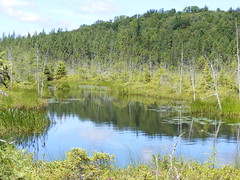
On Tuesday the 14th, we visited the Visitor Interperative Center in Newcomb, Essex County; the following day, we explored it's slightly older sister facility at Paul Smiths, up in Franklin County. Both locations offer well-maintained trails, interesting wildlife and ecosystem exhibits, and a wealth of printed information, as well as computers set up to aid with field identification of birds. Paul Smiths is larger and offers more opportunities for birders, but Newcomb should not be passed over if only for it's impressive old growth forest areas. There are some big trees (picture) in those woods (picture)!
We chose the Sage Trail at Newcomb, as it traverses all the different habitats of the area. Two other trails wind along Rich Lake and probably have some good views. As we walked down towards the water, we heard Hermit Thrush and Red-eyed Vireo. In a dense area of mixed forest, we ran into a large flock of assorted chickadees, nuthatches and warblers foraging in the upper branches. The only good view of a warbler was a flame-throated Blackburnian. Where a bridge crosses the narrows (picture) between the two ends of the lake we were greeted by a pair of rattling Belted Kingfishers.
The rest of the hike was uneventful, other than a Red Squirrel (picture) who was unhappy that I had walked through his neighborhood and told me so in no uncertain terms. We also saw a Brown Creeper climbing up a trunk, which was a first for my wife.
Wednesday the 15th we ventured up north to the Paul Smiths VIC. The parking area is large and open, and yes, it has a lot of birds. I'm seriously considering writing a book called "Parking-lot Birding." There were Black-throated Blue, and Green, Warblers about the lot, and I thought I was hearing a Pine Warbler as well, but couldn't confirm it visually. We chose to tackle the Boreal Life Trail, which starts out in heavy, wet woods (picture) and winds it's way out to Barnum Pond (picture). Hermit Thrush were calling, and there were numerous Red-breasted Nuthatches along the path.
The highlight of this trail is the 1600 foot boardwalk (picture) through a boreal bog. There are even benches at a couple of spots, and you really could spend many hours just walking up and down observing. A Red-tailed Hawk did a flyover, as did two Great Blue Herons. The highlights were two Nashville Warblers moving through the bog, and a Yellow-rumped Warbler working over a tamarack. This is an excellent spot to watch birds, and you really feel out in the middle of nowhere; even the bog plants (picture) are unusual.
This was the one day with nice weather, so we reluctantly left before noon so we could enjoy some kayaking and fishing on Long Lake. We needed to rest up, too, for our Thursday trip to the wilderness, the Moose River Plains. More on that to follow.
Sunday, July 19, 2009
Week in the Adirondacks- Part One

We spent a week in the mountains, with Long Lake as home base, birding various habitats and hiking conditions. The weather was very cool, with showers and thunderstorms almost every day, but the mornings were dry with some sunshine. I don't believe the temperature ever got above 74 degrees, with one night dipping to the low 40s. Blackflies were gone, replaced by flies and lots of mosquitos, but we've found a very effective repellent, so it was really a non-issue.
We arrived on Saturday the 11th, and on the trip north made a westward detour towards Moose River Plains Recreational Area, getting as far as the trailhead to Wakely Mountain before turning around. At Wakely Pond, on the north side of Moose River Rd., we saw a Common Loon diving out on the pond. A Ruby-throated Hummingbird was atop the thicket across the road, along with an American Redstart. The bugs were at their worst here, so we beat a hasty retreat to the rental vehicle and headed to the cottage.
On Sunday the 12th, the William C. Whitney Wilderness Area northwest of Long Lake was the destination. At our first stop, Little Tupper Lake, the parking area and adjacent access road were really hopping. It was tough to stay on any one bird for an identification, as this was an area with mostly tall deciduous trees, with some spruce and pine, and the birds were well concealed and higher up. We came away having seen a Blue-headed Vireo, heard several Black-throated Green Warblers, and many White-throated Sparrows, whose song became a common background sound this week, like Song Sparrow is around the Capital District area.
The former site of the Sabattis Railroad Station at the end of Sabattis Rd. was the parking area for our next stop, the railroad tracks leading northeastward from there; do not go the other way, as the surrounding area is private land, as is the road leading into the Hiawatha Scout Camp. There is a bog about a quarter-mile up the tracks (picture), and the habitat becomes boreal. This is a terrific avenue to view birds, as there is lower growth along much of the way, with the forest edge back aways, providing plenty of opening for perching birds. Chestnut-sided Warbler was common here, and we heard Black-throated Green again; the best sighting was a first for me, a Nashville Warbler, seen singing in the midstory of the trees. Other birds seen and heard were Gray Catbird, Northern Flicker, Wood Thrush, Cedar Waxwing and quite a few White-throated Sparrows. On the way out, a flock of six Purple Finches chattered their way across the road; this is the first time I've seen them where they looked like they were "dipped in raspberry juice."
Our final stop was a bog on the north side of Sabattis Circle Rd.; it was approaching noontime and activity had quieted down some, but I still managed two new birds: Common Raven and a Golden-crowned Kinglet, along with Red-breated Nuthatch and a singing Magnolia Warbler. To top off quite a fine morning deep in the woods, on the road back we came across two Ruffed Grouse, another bird I've never encountered before. They seemed quite approachable, as they stayed in the weeds along the roadside even as our vehicle passed and stopped. A great way to end our first full day of northern birding, with the best yet to come.
Saturday, July 4, 2009
Black Creek Marsh Fourth of July 2009

East of Hennessy Rd.-
Two different quick looks at Least Bittern flying low over the cattails. Orange body, with orange wings outlined with black. Several "songs" were heard as well, something like a low "koo-koo-koo-koo."
Two, and possibly three, Virginia Rails walking in amongst the base of cattail clumps. One very good, long look at one. Orange bill, grayish head, dark brown and black streaked body, with almost no tail. Seemed to respond to my pathetic attempts to call it, as we were only fifteen feet away. One of the coolest birds I have seen this year!
West of Hennessy Rd.-
We saw more Green Herons (at least seven) here today, than I had seen all year combined. A couple flew up to nearby trees and stayed put until we were relatively close. Best views ever of this species; I did not realize they have yellow eyes, and a very thin, creamy white "necktie" down the breast.
Blue-gray gnatcatchers flitting about, some with food in their bills.
Mammal of the day: tri-colored house cat strolling down Hennessy Rd. and into the marsh, off to do his version of "birding."
Reptile of the day: three Northern Water Snakes slithering alongside, and on, the railroad tracks.
Location: Black Creek Marsh
Observation date: 7/4/09
Number of species: 39
Wood Duck 3
Least Bittern 2
Great Blue Heron 2
Green Heron 7
Turkey Vulture 1
Virginia Rail 2
Mourning Dove 5
Red-bellied Woodpecker 2
Yellow-bellied Sapsucker 1
Downy Woodpecker 2
Northern Flicker 1
Pileated Woodpecker 1
Eastern Wood-Pewee 1
Willow Flycatcher 3
Eastern Phoebe 2
Great Crested Flycatcher 1
Eastern Kingbird 3
Red-eyed Vireo 1
Blue Jay 2
American Crow 4
Tree Swallow 10
Barn Swallow 1
Black-capped Chickadee 5
White-breasted Nuthatch 1
House Wren 5
Marsh Wren 8
Blue-gray Gnatcatcher 3
Veery 1
American Robin 12
Gray Catbird 6
Cedar Waxwing 5
Yellow Warbler 2
Common Yellowthroat 4
Song Sparrow 3
Swamp Sparrow 8
Northern Cardinal 1
Red-winged Blackbird 15
Common Grackle 2
American Goldfinch 6
This report was generated automatically by eBird v2(http://ebird.org/ny)
Five Rivers 7/3/09 afternoon

Prarie Warbler seen singing from the top of a pine.
Louisiana Waterthrush (immature?) flew out from a stream undercut, under a small bridge next to the Vlomankill, and landed on a branch nearby. It had a white eyestripe, and was bobbing it’s tail up and down; it had very little striping on the underside, but had a puffed out appearance to it.
House Wrens were quite vocal today. Yellow Warblers were hardly noted; their singing has all but stopped.
Numerous Cedar Waxwings were performing insect-catching aerobatics over the Beaver Pond; they pushed the swallows right away from the whole area.
Mammal of the day: Momma raccoon with two youngsters climbing into their tree hole about five feet off the ground.
Reptile of the day: Eastern Painted Turtle sunning on a platform ten feet away without a care in the world.
Location: Five Rivers
Observation date: 7/3/09
Number of species: 37
Canada Goose 20
Mallard 6
Turkey Vulture 2
Red-tailed Hawk 2
Mourning Dove 2
Ruby-throated Hummingbird 1
Red-bellied Woodpecker 1
Downy Woodpecker 1
Eastern Phoebe 3
Eastern Kingbird 2
Red-eyed Vireo 2
Blue Jay 3
American Crow 4
Tree Swallow 3
Barn Swallow 6
Black-capped Chickadee 2
Tufted Titmouse 1
White-breasted Nuthatch 1
House Wren 3
American Robin 6
Gray Catbird 2
Cedar Waxwing 16
Yellow Warbler 1
Prairie Warbler 1
Ovenbird 2
Louisiana Waterthrush 1
Common Yellowthroat 3
Field Sparrow 3
Song Sparrow 2
Dark-eyed Junco 1
Northern Cardinal 6
Red-winged Blackbird 8
Common Grackle 6
Brown-headed Cowbird 2
Baltimore Oriole 2
House Finch 1
American Goldfinch 6
This report was generated automatically by eBird v2(http://ebird.org/ny)
Thursday, July 2, 2009
Return to Dyken Pond 6/28/09

39 species observed, highlights included:
Great Blue Heron, Turkey Vulture flyovers near the pond.
Yellow-billed Cuckoo in the woods behind Dustin Swamp.
YELLOW-RUMPED WARBLER seen singing at Dustin Swamp. White-throated Sparrow and Dark-eyed Junco there also.
Got buzzed by Ruby-throated Hummingbird several times down by the boat launch. Ovenbird feeding a fledgling there as well.
BLUE-HEADED VIREO and BLACK-THROATED BLUE WARBLER seen on the Water Trail.
BLACKBURNIAN WARBLER seen singing high atop a pine from the parking area.
BLACK-THROATED GREEN WARBLER seen on the boat launch access road- this may be the best quarter-mile stretch to bird at Dyken Pond.
Both Nuthatches, and six for six on the woodpeckers; Yellow-bellied Sapsuckers were numerous today. Hermit Thrush was common as well, along with Ovenbird.
Brilliant red Scarlet Tanager on the road out.
But, from the "what was that about?" dept., on the way out, close to the entrance, at least 150 Common Grackles flew across the road in a great swarm; it took at least ninety seconds for them to all pass from right to left. I may be underestimating the number by half, as I didn't try to count them at first. Drive slowly on the road in to the parking lot, there are big potholes, rivulets, and washouts from all the recent rains.
Location: Dyken Pond Environmental Ed Center
Observation date: 6/28/09
Number of species: 39
Great Blue Heron 1
Turkey Vulture 1
Yellow-billed Cuckoo 1
Ruby-throated Hummingbird 1
Red-bellied Woodpecker 1
Yellow-bellied Sapsucker 1
Downy Woodpecker 1
Hairy Woodpecker 1
Northern Flicker 1
Pileated Woodpecker 1
Eastern Phoebe 1
Blue-headed Vireo 1
Red-eyed Vireo 5
Blue Jay 2
American Crow 1
Tree Swallow 3
Black-capped Chickadee 6
Tufted Titmouse 1
Red-breasted Nuthatch 1
White-breasted Nuthatch 2
Hermit Thrush 3
American Robin 8
Cedar Waxwing 6
Black-throated Blue Warbler 3
Yellow-rumped Warbler 1
Black-throated Green Warbler 2
Blackburnian Warbler 1
Ovenbird 10
Common Yellowthroat 3
Scarlet Tanager 1
Chipping Sparrow 1
Song Sparrow 2
Swamp Sparrow 2
White-throated Sparrow 1
Dark-eyed Junco 4
Rose-breasted Grosbeak 1
Red-winged Blackbird 2
Common Grackle 150
American Goldfinch 2
This report was generated automatically by eBird v2(http://ebird.org.ny/)
Emma Treadwell Thacher Nature Center, Thompson's Lake 6/27/09

Over the grassier areas, tree swallows were the most common species, but no bluebirds were seen. Highlight was a female Bobolink hanging from the grass stems. Four species of Sparrow (Chipping, Field, Savannah and Song) were seen.
Location: Thompson's Lake Nature Center
Observation date: 6/27/09
Number of species: 41
Great Blue Heron 2
Turkey Vulture 1
Broad-winged Hawk 2
Mourning Dove 1
Yellow-bellied Sapsucker 3
Hairy Woodpecker 1
Northern Flicker 1
Eastern Wood-Pewee 1
Eastern Phoebe 1
Eastern Kingbird 2
Yellow-throated Vireo 1
Red-eyed Vireo 1
Blue Jay 3
American Crow 2
Tree Swallow 10
Barn Swallow 2
Black-capped Chickadee 2
White-breasted Nuthatch 2
House Wren 4
Wood Thrush 1
American Robin 2
Gray Catbird 4
Cedar Waxwing 6
Yellow Warbler 1
Blackburnian Warbler 1
Ovenbird 2
Common Yellowthroat 3
Scarlet Tanager 2
Eastern Towhee 4
Chipping Sparrow 1
Field Sparrow 1
Savannah Sparrow 1
Song Sparrow 2
Dark-eyed Junco 1
Northern Cardinal 1
Bobolink 1
Red-winged Blackbird 3
Common Grackle 3
Brown-headed Cowbird 1
Baltimore Oriole 1
American Goldfinch 3
This report was generated automatically by eBird v2(http://ebird.org/ny)
Papscanee Island 6/20/09
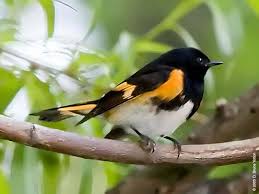
Once into the densely covered preserve, the dominant species was American Redstart; they were seemingly everywhere. Wood Thrush were common and could occasionally be viewed. The preserve borders the Hudson River on it's west side, and a Mute Swan was observed flying southbound low over the river. The highlight here, however, was a Double-crested Cormorant out in the water with a freshly caught eel! After several minutes of struggle the cormorant ate the eel whole.
This is a very "birdy" area with a wide variety of common species. Bring boots, as it can be very wet, and plenty of insect repellent as well. Also beware that Amtrak runs a high-speed rail line on the east side of the preserve; the trains are frequent and come up on you quickly.
Location: Papscanee Island Nature Preserve
Observation date: 6/20/09
Number of species: 46
Canada Goose 6
Mute Swan 1
Mallard 1
Double-crested Cormorant 2
Great Blue Heron 2
Red-tailed Hawk 2
Killdeer 20
Spotted Sandpiper 1
Mourning Dove 1
Ruby-throated Hummingbird 1
Red-bellied Woodpecker 1
Downy Woodpecker 2
Eastern Wood-Pewee 1
Willow Flycatcher 2
Great Crested Flycatcher 1
Eastern Kingbird 2
Yellow-throated Vireo 1
Warbling Vireo 2
Red-eyed Vireo 1
American Crow 2
Fish Crow 1
Tree Swallow 15
Bank Swallow 1
Black-capped Chickadee 2
Tufted Titmouse 1
White-breasted Nuthatch 1
House Wren 1
Blue-gray Gnatcatcher 2
Eastern Bluebird 2
Veery 2
Wood Thrush 3
American Robin 8
Gray Catbird 6
Cedar Waxwing 5
Yellow Warbler 4
American Redstart 15
Common Yellowthroat 3
Savannah Sparrow 1
Song Sparrow 1
Northern Cardinal 1
Rose-breasted Grosbeak 1
Indigo Bunting 1
Red-winged Blackbird 6
Brown-headed Cowbird 1
Baltimore Oriole 2
American Goldfinch 10
This report was generated automatically by eBird v2(http://ebird.org/ny)
Dyken Pond 6/14/09
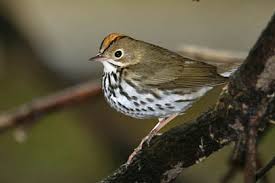
The parking area was alive with birdsong when we arrived at 8:30. Blackburnian Warbler ("teetsa-teetsa-teetsa-teetsa", sounds like a dogs' squeaky toy) was seen singing in the spruce trees right next to us. Also, Black-throated Green Warbler ("zoooo-zee-zu-zu-zee") was seen just into the woods. Heard a third warbler that was familiar, but could not identify right off. The most abundant species, along with the omnipresent robin, was Ovenbird. I have been told, and have read, that you rarely see ovenbirds; you generally just hear the explosive song from the dense woodland floor. Come to Dyken Pond and you can watch them walking the ground fifteen feet from you, and flying around at eye-level, landing on limbs to check you out. Not secretive here.
The pond itself was quiet, other than Red-eyed Vireo and a Rose-breasted Grosbeak (and more Ovenbirds.) We explored five of the short, interconnecting trails, including the well-maintained boardwalk across Dustin Swamp. Interesting mix there, sapsuckers, flycatchers, swallows, waxwings, grackles, and two winter birds gone MIA, white-throated sparrow and dark-eyed junco (many.) The deep, thick woods had a Winter Wren sitting on a rock thirty feet away(what an amzingly long, complicated song), Veery and more juncos. Walking the main road back to the parking area, we had Ovenbird (again), and, right in succession, Canada Warbler and Blue-headed Vireo. At the lot we saw Turkey Vultures circling.
This is a location I will bird again soon, and I recommend it to others who have not visited yet. Forty-five minute drive from Northway exit 7.
Mammal of the day: Porcupine
Amphibian of the day: Red eft (salamander)
Location: Dyken Pond Environmental Ed Center
Observation date: 6/14/09
Number of species: 33
Turkey Vulture 4
Ruby-throated Hummingbird 1
Yellow-bellied Sapsucker 3
Downy Woodpecker 1
Northern Flicker 1
Pileated Woodpecker 1
Eastern Wood-Pewee 1
Willow Flycatcher 1
Eastern Phoebe 1
Blue-headed Vireo 1
Warbling Vireo 2
Red-eyed Vireo 1
Blue Jay 1
Tree Swallow 8
Black-capped Chickadee 2
Red-breasted Nuthatch 2
Winter Wren 1
Veery 1
American Robin 10
Cedar Waxwing 3
Black-throated Green Warbler 1
Blackburnian Warbler 3
Cerulean Warbler 1
Ovenbird 10
Common Yellowthroat 2
Canada Warbler 1
Eastern Towhee 1
Chipping Sparrow 1
Song Sparrow 1
White-throated Sparrow 1
Dark-eyed Junco 6
Rose-breasted Grosbeak 1
Common Grackle 4
This report was generated automatically by eBird v2(http://ebird.org/ny)


